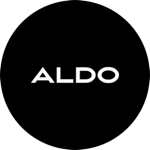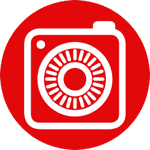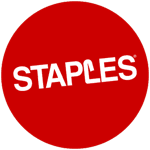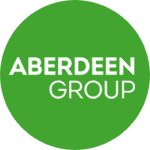Performance studies related to "posts"
-

Relive improved their key performance metrics and achieved over 50% faster Largest Contentful Paint (LCP) and almost zero layout shifts (CLS) across all key pages. This resulted in a 3% increase in conversion rate, a 6% decrease in bounce rate, and a 9% increase in page views per session. Permalink Share on Twitter
-

PubTech's Consent Management Platform reduced INP on their customers' websites by up to 64%, while also improving ad viewability by up to 1.5%. Permalink Share on Twitter
-

Contentsquare aggregated data from 997 customer sites for the three months starting May 1st of 2023. They found that users who experienced good INP had a 25% better conversion rate than users experiencing poor INP, and users experiencing poor INP were more likely to bounce or express frustration via rage clicks or multiple interactions than users experiencing good INP. Permalink Share on Twitter
-

redBus, a bus booking and ticketing website based in India, undertook a substantial effort to improve their website's INP by 72%. As a result of their efforts, they were able to increase sales by 7%. Permalink Share on Twitter
-

The Economic Times improved CLS from 0.25 to 0.9 and reduced values in the "Poor" range by 65%, and also improved LCP from 4.5 seconds to 2.5 seconds and reduced values in the "Poor" range by 33%. This reduced bounce rates by 43%. Permalink Share on Twitter
-

QuintoAndar reduced LCP by 26% and FID by 72% and saw a 46% reduction in bounce rate, and 87% increase in pages per session, and a 5% improvement in conversion. Permalink Share on Twitter
-

Adobe improved from 7.2 seconds to 3.4 seconds and engaged visit rate increased by 35%, bounce rates decreased by 6%, and the average time spent on page increased by 21% for mobile visitors. Permalink Share on Twitter
-

Carpe improved Largest Contentful Paint by 52% and Cumulative Layout Shift by 41% and saw a 10% increase in traffic, a 5% increase in online store conversion rate, and a 15% increase in revenue. Permalink Share on Twitter
-

Sunday Citizen improved their key performance metrics and were able to achieve 25% improvement in Largest Contentful Paint and 61% in Cumulative Layout Shift at the 75th percentile. This resulted in 4% decrease in bounce rate and over 6% increase in conversion. Permalink Share on Twitter
-

Rakuten 24 ran an A/B test showing improved vitals brought a 53.4% incrase in revenue per visitor, 33.1% increase in conversion rate, 15.2% increase in average order value, 35.1% reduction in exit rate and more! Permalink Share on Twitter
-

Groupe Renault found a strong correlation between Largest Contentful Paint and both their bounce rate and conversion rate, with a 1 second improvement leading to up to a 14 percentage point decrease in bounce rate, and 13% increase in conversions. Permalink Share on Twitter
-

SpeedSense worked with an e-commerce company to improve performance and saw a 7.6% increase in sitewide conversion, translating to roughly a $6 million lift in annual revenue. Mobile transactions increased by nearly 30% and sales per session increased by 16%. Permalink Share on Twitter
-

Ingram Micro focused on reducing Total Blocking Time and saw a 35% increase in organic traffic by improving their homepage TBT by 40%. Permalink Share on Twitter
-

Swappie reduced load time by 23%, LCP by 55%, CLS by 91% and FID by 90% and saw a 42% increase in mobile revenue and a 10 percentage point increase in relative mobile conversion rate. Permalink Share on Twitter
-

NDTV, one of India's leading news stations and websites, improved LCP by 55% and saw a 50% reduction in bounce rate. Permalink Share on Twitter
-

iCook improved CLS by 15% and saw a 10% increase in ad revenue as a result. Permalink Share on Twitter
-

Tokopedia improved LCP by 55% and saw a 23% increase in average session duration. Permalink Share on Twitter
-

Vodafone improved their LCP by 31%, resulting in an 8% increase in sales, a 15% increase in their lead to visit rate, and an 11% increase in their cart to visit rate. Permalink Share on Twitter
-

Yahoo! Japan News reduced CLS by .2, decreasing the number of URLS with poor performance in search console by 98%. As a result, they saw a 15.1% increase in page views per session, 13.3% longer session durations and a 1.72 percentage point decrease in bounce rate. Permalink Share on Twitter
-

Yelp reduced First Contentful Paint (75th percentile) by 45% and Yelp Page Complete (75th percentile) by 25% and saw a 15% improvement in their conversion rate. Permalink Share on Twitter
-

Bing observed that an engineer that improves server performance by 10ms (that’s 1/30 of the speed that our eyes blink) more than pays for his fully-loaded annual costs. Every millisecond counts Permalink Share on Twitter
-

Bridesmaid dress retailer Revelry relaunched its ecommerce site on an updated version of its ecommerce platform and with smaller images. The site loads 43% faster, bounce rates have decreased 8% and conversion is up 30% Permalink Share on Twitter
-

After making improvements to multiple performance metrics (including LCP, CLS and Long Task time), Agrofy saw a 76% reduction in their abandonment rate and a significant boost in engagement. Permalink Share on Twitter
-

SportsShoes.com found that faster-than-average mobile visits were 41% more likely to convert than slower-than-average visits. Permalink Share on Twitter
-

SnipesUSA.com decreased page load speed by 30% and saw its average conversion rate double to from 1% to 2%. Permalink Share on Twitter
-

Rossignol.com improved their load time by 1.9 seconds and cut their Speed Index by a factor of 10, contributing to a 94% improvement in conversion rate when compared to the year prior. Permalink Share on Twitter
-

A Google study over millions of page impressions found that when a site meets the recommended thresholds for the Core Web Vitals metrics, users are at least 24% less likely to abandon a page before it finishes loading. Permalink Share on Twitter
-

ALDO found that on their single-page app, mobile users who experienced fast rendering times brought 75% more revenue than average, and 327% more revenue that those experiencing slow rending times. on desktop, users with fast-rendering times brought in 212% more revenue than average and 572% more than slow. Permalink Share on Twitter
-

When Google Search started using speed as a (very small) ranking signal, they saw a 15%-20% improvement in user-centric perf metrics of pages loaded from search results and a 20% reduction in abandonment. Permalink Share on Twitter
-

Radins.com improved their Speed Index by 51% for the desktop experience and saw a significant increase in conversion (+12%) and a drop in the bounce rate (-25%). Permalink Share on Twitter
-

Furnspace reduced their image payload by 86% resulting in a reduction in load time of 65%. This improved user experience helped double Furnspace’s eCommerce purchase conversion ratio, cut bounce rates by 20%, increase mobile revenue by 7% and dramatically improve SEO. Permalink Share on Twitter
-

Carousell reduced page load time by 65% and saw a 63% increase in organic traffic, a 3x increase in advertising click-thru rate and a 46% increase in first-time chatters. Permalink Share on Twitter
-

Web studio Sparkbox more than doubled Driver Solutions’ conversion rate for organic traffic, moving it from 2.69% to 5.57% after deploying performance updates and AMP pages. Permalink Share on Twitter
-

Zalando saw a 0.7% increase in revenue when they shaved 100ms off their load time. Permalink Share on Twitter
-

Tokopedia reduced render time from 14s to 2s for 3G connections and saw a 19% increase in visitors, 35% increase in total sessions, 7% increase in new users, 17% increase in active users and 16% increase in sessions per user. Permalink Share on Twitter
-

Fashion retailer Missguided removed BazaarVoice for Android visitors. Median page load time improved by 4 seconds, and revenue increased by 26% Permalink Share on Twitter
-

Furniture retailer Zitmaxx Wonen reduced their typical load time to 3 seconds and saw conversion jump 50.2%. Overall revenue from the mobile site also increased by 98.7%. Permalink Share on Twitter
-

COOK increased conversion rate by 7% after cutting average page load time by 0.85 seconds. Bounce rate also fell by 7% and pages per session increased by 10%. Permalink Share on Twitter
-

Rebuilding Pinterest pages for performance resulted in a 40% decrease in wait time, a 15% increase in SEO traffic and a 15% increase in conversion rate to signup. Permalink Share on Twitter
-

Tests of the new, faster FT.com showed users were up to 30% more engaged—meaning more visits and more content being consumed. Permalink Share on Twitter
-

BBC has seen that they lose an additional 10% of users for every additional second it takes for their site to load Permalink Share on Twitter
-

Ancestory.com saw a 7% increase in conversions after improving render time by 68%, page weight by 46% and load time by 64%. Permalink Share on Twitter
-

AliExpress reduced load time by 36% and saw a 10.5% increase in orders and a 27% increase in conversion for new customers. Permalink Share on Twitter
-

According to Google's DoubleClick, when comparing sites that load in 5 seconds to sites that load in 19 seconds, the faster sites had 70% longer average session lengths, 35% lower bounce rates and 25% higher ad viewability than their slower counterparts. Permalink Share on Twitter
-

Google's DoubleClick found that publishers whose mobile sites load in 5 seconds earn up to 2x more mobile ad revenue than sites loading in 19 seconds. Permalink Share on Twitter
-

For every 100ms decrease in homepage load speed, Mobify's customer base saw a 1.11% lift in session based conversion, amounting to an average annual revenue increase of $376,789. Similarly, for every 100ms decrease in checkout page load speed, Mobify's customers saw a 1.55% life in session based conversion, amounting to an average annual revenue increase of $526,147 Permalink Share on Twitter
-

Optimizely added artificial latency to the Telegraph and saw page views plummet: by 11% for a 4 second delay and 44% for a 20 second delay. Permalink Share on Twitter
-

The Trainline reduced latency by 0.3 seconds across their funnel and customers spent an extra £8 million (~$11.5 million) a year. Permalink Share on Twitter
-

Financial Times added a one second delay to every page view and saw a 4.9% drop in the number of articles users read over a 7 day window. A two-second delay resulted in a 4.4% drop, and a three second delay saw a 7.2% drop. After twenty-eight days the two and three second variants both resulted in further drops in engagement. Permalink Share on Twitter
-

Instagram increased impressions and user profile scroll interactions by decreasing the response size of the JSON needed for displaying comments (by 33% for the median and 50% for the 95th percentile for the main endpoint). Permalink Share on Twitter
-

TRAC Research found, in a survey of 300 companies, that the average revenue loss for an hour of downtime was $21,000. For the same set of companies, average revenue loss due to an hour of slow performance (defined as load times exceeding 4.4 seconds) was $4,100. Website slowdowns occurred ten times more often than outages. Permalink Share on Twitter
-

Staples reduced median homepage load time by 1 second and reduced load time for the 98th percentile by 6 seconds. As a result, they saw a 10% increase in their conversion rate. Permalink Share on Twitter
-

GQ cut load time by 80% and saw an 80% increase in traffic. Median time spent on the site also increased by 32%. Permalink Share on Twitter
-

AutoAnything reduced page load time by 50% and saw an 12-13% increase in sales. Permalink Share on Twitter
-

Glasses Direct found that for every second they added to the load time, there was a 6.7% decrease in conversions. In addition, load time for users who did not convert was 3-4 times as high as for converting customers. Permalink Share on Twitter
-

Etam reduces it's average page load time from 1.2s to 500ms and increased conversions by 20%, time on site by 21%, and pages viewed per visit by 28%. Permalink Share on Twitter
-

When YouTube introduced a version of their pages that was 90% lighter, they saw a large increase in traffic in areas with poor connectivity such as Southeast Asia, South America, Africa and Siberia. Permalink Share on Twitter
-

Edmunds decreased load time by 77% and saw a 20% increase in page views, 4% reduction in bounce rate and 3% reduction in ad impression variance. Permalink Share on Twitter
-

Walmart saw up to a 2% increase in conversions for every 1 second of improvement in load time. Every 100ms improvement also resulted in up to a 1% increase in revenue. Permalink Share on Twitter
-

The Obama for America site improved performance by 60% and saw a corresponding increase in conversions of 14%. Permalink Share on Twitter
-

Netflix saw a 43% decrease in their bandwidth bill after turning on GZip. Permalink Share on Twitter
-

While reducing page load from 15 seconds to 2 seconds, Intuit saw a 3% improvement in conversions for every second reduced over 7 seconds, and a 2% improvement in conversions for every second reduced over 5 seconds. Permalink Share on Twitter
-

A presentation from AOL revealed that visitors in the top 10% of site speed viewed 50% more pages than visitors in the bottom 10%. Permalink Share on Twitter
-

Google reported that users who experienced a 400ms delay performed 0.44% fewer searches during the first three weeks and 0.76% fewer searches during the second three weeks. Permalink Share on Twitter
-

Removing one client-side redirect from Google's DoubleClick resulted in a 12% improvement in click-through rate. Permalink Share on Twitter
-

Yahoo increased traffic by 9% for each 400ms of improvement in load time. Permalink Share on Twitter
-

Shopzilla decreased load time by 5 seconds and saw a 12% increase in conversion rate, a 25% increase in page views and a 50% reduction in infrastructure required. Permalink Share on Twitter
-

Mozilla cut load time by 2.2 seconds and saw download conversions increase by 15.4% Permalink Share on Twitter
-

Google finds a 500ms increase in page load results in 25% less searches. Permalink Share on Twitter
-

Etsy saw a 12% increase in bounce rate when they added 160KB of images to their mobile page. Permalink Share on Twitter
-

One second delay in Bing results in a 2.8% drop in revenue. Two second delay results in 4.3% drop. Permalink Share on Twitter
-

Amazon sees a 1% decrease in revenue for every 100ms increase in load time. Permalink Share on Twitter
-

The Aberdeen Group discovered a 1-second delay resulted in 11% fewer page views, a 16% decrease in customer satisfaction, and 7% loss in conversions. Permalink Share on Twitter